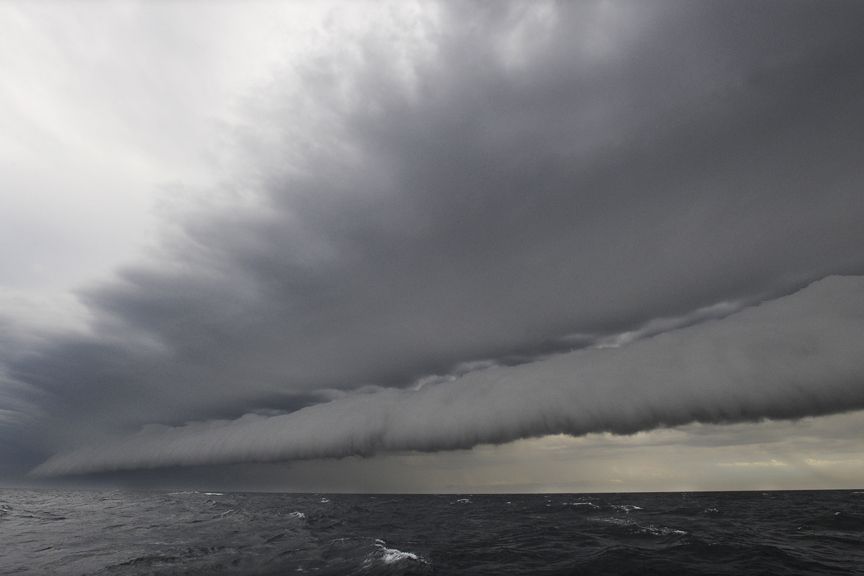Cloud Brightening Could Curb Warming

Researchers have revived a push to test cloud brightening, a type of geoengineering designed to combat global warming by pumping salt water into the sky.
In proposed cloud-brightening schemes, ships would shoot tiny salt particles into the air over the ocean, creating large, long-lasting clouds that reflect sunlight back into space, which would have a cooling effect on Earth.
An international team of researchers wants to test this method with a small-scale experiment. After deploying an initial set of salt-water sprayers on a ship or barge, the researchers say they would use airplanes to study the physical and chemical characteristics of the particles and how they disperse as well as how the cloud develops and how long it remains.
In the next phase, five to 10 spraying ships would be spread out across a 62-mile (100-kilometer) stretch to create clouds so large scientists could use to satellites to study them and their ability to reflect light, a statement from the University of Washington explained.

"What we're trying to do is make the case that this is a beneficial experiment to do," Rob Wood, an author of the paper and atmospheric physicist at the University of Washington, said in the statement.
While it may have the potential to slow the pace of global warming, the researchers warned cloud brightening is not a solution to the problem.
"It's a quick-fix idea when really what we need to do is move toward a low-carbon emission economy, which is turning out to be a long process," Wood said. "I think we ought to know about the possibilities, just in case."
Sign up for the Live Science daily newsletter now
Get the world’s most fascinating discoveries delivered straight to your inbox.
In their report in the journal Philosophical Transactions of the Royal Society, the researchers emphasized that they would have to move ahead with caution, writing that there would be no reason to use marine cloud brightening unless the technology proved to be safe. They said there also would need to be international agreement firmly in favor of the practice before it can be used.
Cloud seeding technologies have been used before, but usually with the intent to trigger or prevent precipitation. China employed the technique in 2008, for example, in an attempt to stop rain from ruining the opening and closing ceremonies of the Beijing Olympics. The authors of this new study previously suggested that cloud brightening in certain tropical regions could reduce the strength of some hurricanes and possibly prevent others from forming.
Follow LiveScience on Twitter @livescience. We're also on Facebook & Google+.











